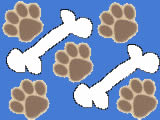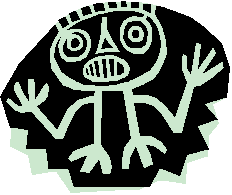Deliver Commands In A Clear Way
How To Deliver Commands
|
Now that we know how we will say our signals, the next step is to condition the dog to respond to the signals in the appropriate way. We do this initially by saying the signal at the same time we gently manipulate through physical guidance. When the dog learns to associate the command with the behavior, the guidance is eliminated and the dog responds to the command when given. In other words, the command has become a substitute for the physical manipulation or, scientifically speaking, the primary cue (physical force) has been replaced by a secondary cue (spoken command). Dogs have great observation skills. In the wild, dogs primarily communicate through body gestures and cues so it is much more natural for a dog to respond to a visual cue rather than sound cue. If the dog is given a choice, they would rather respond to the visual cue over the sound cue. While it is rather impressive to demonstrate how your dog responds to silent commands, they have only limited use when the dog is not paying attention to your signal or can't see the signal due to light conditions or other obstacles. In my opinion a soft-spoken command is better than a hand gesture. |

Continue to Two Main Factors







